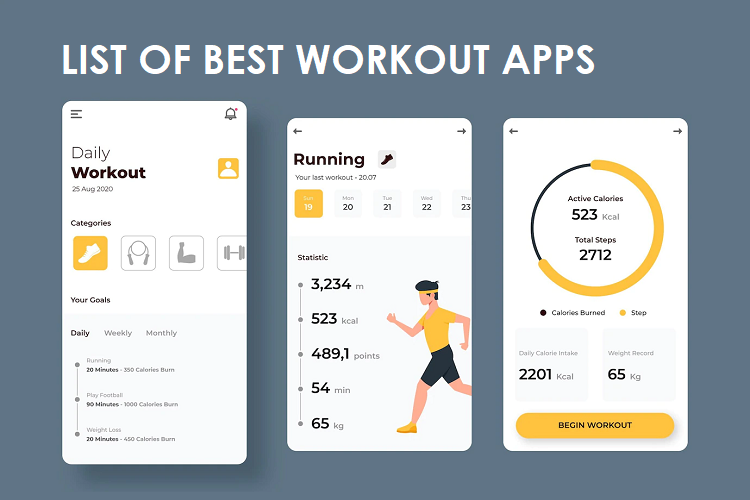Custom software development can be an expensive endeavor, but an accurate cost estimate is crucial for making sound business decisions. Proper budgeting and planning rely heavily on a realistic assessment of the time, resources, and overall costs required to bring a software product from concept to launch.
In this comprehensive guide, we will walk through the key factors, techniques, tools, and tips to nail down an accurate cost estimate for your custom software development project.
Understanding Custom Software Development
Custom software refers to software that is specially built for a specific organization or business. It involves designing and programming an application from scratch based on the unique requirements of the client.
The key phases in a typical custom software development lifecycle include:
- Requirements Gathering and Analysis: Detailed consultation with stakeholders to understand objectives, must-have features, workflows, integrations etc. This leads to comprehensive documentation of the requirements.
- Design: Translating requirements into technical specifications, architecture, mockups, prototypes etc.
- Development: The actual software programming is based on the finalized design.
- Testing: Rigorous testing across different parameters – usability, functionality, responsiveness, security etc.
- Deployment: Installing and launching the software for use.
- Maintenance and Updates: Post-launch support including fixes, enhancements, integrations, and adapting to evolving needs.
The complexity and costs involved in each phase vary significantly depending on the size and scope of the software being built.
Factors Affecting Custom Software Development Costs
While estimating costs, it’s important to take into account various direct and indirect factors that can influence the time and resources required for development.
Project Complexity
The overall complexity of the software architecture and programming impacts how much effort goes into development and testing. Complexities could arise from advanced functionality involving complex algorithms or AI, underlying technology stack, third-party integrations, security requirements related to data protection and compliance etc.
For example, developing a self-learning recommendation engine requires more complex logic than building a simple web-based interface. Integrating with payment gateways or CRM software is trickier than having standalone functionality. Such complexities have a direct bearing on development costs.
Size and Functionality
The scale and scope of functional requirements for the software determines the volume of development and testing work involved. For instance, developing an enterprise-level ERP system with intricate workflows is far more effort-intensive than building a straightforward mobile app with basic features.
The number of use cases, user journeys, interfaces, integrations, and amount of business logic ultimately translate into software size and hours for coding and testing.
Technology Stack and Tools
The choice of programming languages, frameworks, databases, and other technical tools and technologies used in development plays a big role in determining costs. The inherent complexity, maturity, and documentation of the technology stack impact the learning curve for developers, actual coding productivity, flexibility for future enhancements, testing overhead, etc.
For instance, using open-source programming languages like Python and PHP and databases like MySQL is typically more cost-effective compared to proprietary technologies which require expensive licensing. Legacy or outdated technologies require specialized skills that may be costlier as well.
Development Team
The size, skill levels, experience, location, and hourly rates of the software development team have a direct bearing on costs. Finding adequate expertise in leading-edge and niche technologies may require larger team sizes or niche contractors with premium hourly rates.
Offshore and nearshore development teams typically cost less compared to onshore resources in mature markets. The level of seniority, technical capabilities and product mindset also impact the efficiency of the team.
Third-Party Integrations
If third-party integrations with solutions like payment gateways, CRM/ERP software, mailing systems, etc. are required, it adds development and testing efforts based on the availability of APIs, documentation, and overall complexity of the integration.
For example, integrating with a payment gateway via a simple API call is easier than having real-time synchronization with an ERP across multiple functions and data points. The costs for third-party integrations are typically estimated based on the number of integration points required.
Regulatory and Compliance Requirements
For software dealing with sensitive user data or business functions, relevant security, data privacy, and industry-specific regulatory compliance requirements come into play, depending on the domain.
These add to costs as processes and controls around access management, data encryption, auditing, reporting etc. have to be implemented across the software architecture. Extensive documentation and demonstration of compliance also add overhead.
Best Practices for Custom Software Development Cost Estimation
Here are some proven strategies and best practices to arrive at more accurate cost estimates for your custom software projects:
Detailed Requirement Analysis and Documentation
As elaborated earlier, in-depth consultation across diverse stakeholder groups is crucial to capture intricate product specifications upfront. Having crisp and detailed documentation covering all business scenarios, use cases, integrations, workflows and technical requirements leaves little room for guesswork while framing estimates.
It also limits the possibility of additional requirements surfacing later that can jeopardize timelines and budgets.
Utilizing Historical Data and Benchmarks
Data-driven estimation using past project metrics provides reliable models to predict costs and timelines for similar initiatives. Parameters like development hours per feature, testing time per number of test cases, productivity metrics per developer etc. can be derived from historical data and applied suitably.
Industry research reports also provide useful benchmark data for cost estimates based on project size, scope, geography, technology stack etc.
Involvement of Domain Experts
In addition to business teams, get technical inputs from solution architects, programming leads, DevOps engineers, QA specialists etc. before finalizing estimates. Their expertise can identify potential challenges or complexities in translating requirements into technical implementation based on prior experience.
Having their sign-off on estimates provides confidence in assumptions made. Their input also helps assign time and resources required across specialized roles.
Agile and Iterative Approach
For large monolithic projects, upfront estimates may be largely guesswork. Adopting agile delivery with continuous user feedback and scope enhancements done iteratively in phases helps refine estimates progressively based on learnings from initial development cycles.
Breaking work down into smaller work packets and short sprints prevents huge variations from initial estimates.
Regular Communication and Feedback Loops
Continuous collaboration between the development team and key stakeholders from the client organization is vital for accurate estimations. Scheduling regular working sessions, demos, project status updates and steering committee meetings provides ongoing opportunities for exchange of feedback and timely course corrections.
As any new challenges or requirements emerge, estimates can be revisited and realigned based on two-way dialogue.
Buffering for Uncertainties and Changes
Despite meticulous planning, unforeseen requirements or technical complexities can surface during later stages of projects, leading to delays. Providing a 10-20% buffer while estimating timelines and costs accounts for such contingencies so that the overall budget and schedule are not severely impacted.
Common Challenges and How to Overcome Them
While estimations are the best guess based on available information, certain factors can derail them, leading to delays and cost overruns. Here are some ways to productively deal with uncertainties:
Changing Project Requirements
Stakeholders may want to introduce new features or modifications beyond what was originally planned. Using agile methodologies, the project scope can be broken down into smaller releases so that requirement changes can be accommodated iteratively without blowing up budgets completely.
Scope Creep
Scope creep refers to uncontrolled changes and additions beyond the agreed scope. This can be prevented by implementing a structured change request process for approving new requirements based on priority and cost-benefit analysis. Any major changes get priced separately as an additional statement of work.
Poorly Defined Objectives
Lack of clarity on business outcomes and objectives often leads to ill-defined specifications and ever-evolving requirements. Investing heavily upfront in deeply understanding the problem statement through open dialogue and concrete use case definitions provides a strong foundation for framing solution requirements comprehensively.
Inaccurate Initial Assessment
Certain complexities get overlooked in initial enthusiasm which leads to underestimation. As implementation begins and unknowns surface, continuously reassess ongoing work to identify potential mismatches with initial estimates. Being open about emerging challenges and recalibrating estimates is helpful.
Mitigating Risks
Run through risk analysis scenarios spanning technical complexities, resource constraints, external dependencies or other bottlenecks. Identify mitigation strategies and build necessary slack into estimates for contingency plans to avoid missing deadlines if risks materialize.
Techniques for Accurate Cost Estimation
Here are some tried-and-true techniques for accurate project cost estimates that can be used alone or in combination:
Bottom-up Estimation
Breaking down the software scope into granular components, activities, and tasks required to build each module and functionality is involved. Through discussions with developers, architects, and relevant experts, the effort, resources, and timelines for each unit are estimated at the micro level. These are then added together to form an overall estimate.
Top-down Estimation
To create a macro estimate, some high-level parameters such as per-line-of-code estimates, overall budget based on comparative projects, ballpark timelines, and so on are used. As the project progresses, micro-level details emerge, causing the initial top-down estimate to be refined.
Parametric Estimation
This is accomplished through the use of a statistical model developed using historical data and metrics from previous projects of a similar nature. Through regression analysis, metrics such as project size, functionality points, test cases, and so on are used in conjunction with cost and time data from completed projects to predict estimates for the proposed project.
Analogous Estimation
Estimates for the proposed project are based on actual values from other completed projects within the organization that have similar specifications, technology, team composition, and so on. Metrics from similar initiatives form the basis for estimation.
Three-point Estimation
Three estimates are made for each project task or module: a minimum or best-case estimate, a maximum or worst-case estimate, and the most likely estimate. Based on quantitative analysis, the most likely estimate is given the most weightage of the three when calculating the expected effort and cost.
Expert Judgment
Taking cues from experts such as technical architects, lead developers, and so on, who have experience estimating and working on similar past projects, provides invaluable perspective when framing estimates.
Tools and Technologies for Cost Estimation
Specialized software tools and technologies are available to assist with cost calculations, scenario analysis, resource allocation etc.:
Microsoft Project
A popular project management software that includes features like estimating project costs based on task durations, resource rates, dependencies etc. Helps with a cost-benefit analysis of adding resources.
Price&Cost
Provides parametric and Monte Carlo simulation capabilities for estimating along with integrated resource planning. Easy integration with systems like JIRA and Microsoft Excel.
CostLOCK
Uses sophisticated algorithms and AI on historical data to generate highly accurate estimates and forecasts. Great for agile development and continuous planning.
COCOMO II
An open-source constructive cost estimation model that takes into account project size, product attributes, personnel expertise etc. to estimate effort, schedule and cost.
Confluence
Collaboration software provides in-built templates for top-down and bottom-up estimation. Maintains full traceability between estimates and delivery timelines.
Tips and Tricks for Efficient Cost Estimation
Here are some handy tips to further refine your cost estimation practices:
Establish Clear Goals and Objectives
Clearly identifying what business outcomes the software aims to achieve guides the assessment of requirements. Abstract or fuzzy objectives lead to poor estimations.
Break Down the Project
Deconstructing a large software into smaller, modular components allows for more accurate identification of the effort and resources needed for each part.
Consider Scalability Needs
Factor in technical flexibility and overhead to accommodate potential future increases in business volumes, transactions, data, users etc.
Leverage Open Source
Open-source technologies with permissible licensing and the availability of skilled resources can significantly bring down software costs.
Evaluate Alternative Methodologies
Consider lower-cost development approaches like low-code platforms, minimum viable product (MVP) development, agile/iterative delivery etc.
Continuously Improve Estimation Practices
Analyze data from each project post-delivery to identify areas where estimations deviated. Apply lessons learned to the estimation process for subsequent projects.
Conclusion
Estimating custom software development costs accurately is challenging, but extremely important for budgeting and planning purposes. It requires detailed project analysis, structured estimation approaches and open communication between the development partner and software purchaser.
Following proven practices like exhaustive requirements gathering, leveraging historical data, evaluating alternative delivery models, breaking down project scope, risk-based forecasting and continuous estimation refinement goes a long way in minimizing inaccuracies and cost overruns for custom software projects.
With the right methodology, tools and expertise, organizations can arrive at realistic estimates and ensure their software initiatives deliver maximum value within defined budgets.






